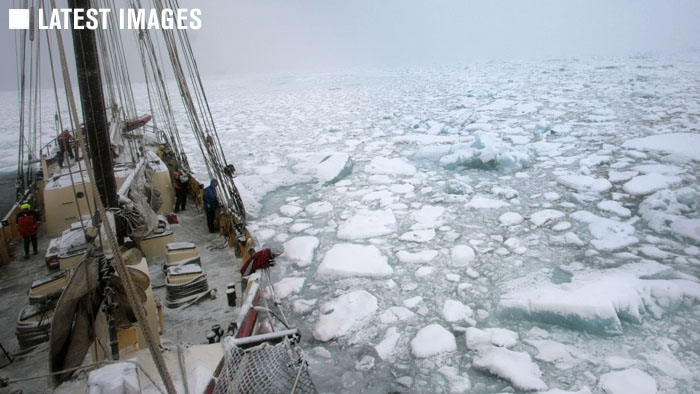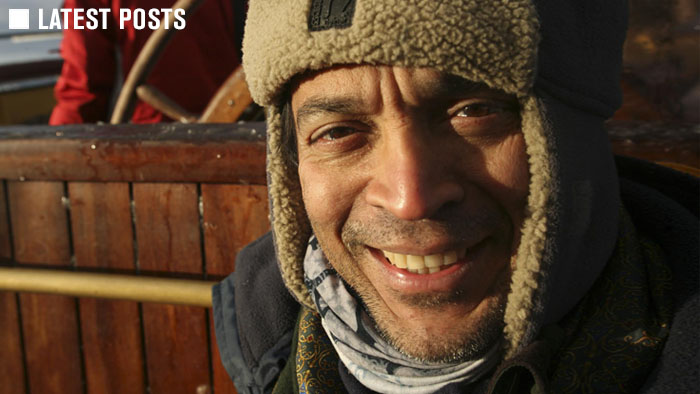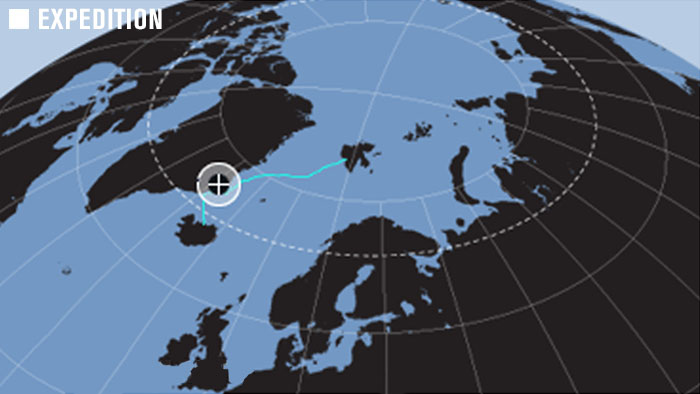Glaciers rock!
By Carol // Wednesday 3 Oct // 19:30:05 // View
[photopress:MB_IMG_2739.jpg,full,pp_image]
[photopress:CC_gyre.jpg,full,pp_image]
As a non-sailor, coming across the Greenland sea was surprisingly exhilarating. Weirdly, the increasing sense of exhilartion appeared to be exponetially linked to a worsening sea state (although my mum will never believe that in a month of sundays!) But now I’m seeing my glacial geomorphology textbooks come to life in a huge, towering, awe-inspiring way.
On the 2nd we went for an afternoon walk on a large moraine complex. One glacier fed into the head of the current fjord, in a north-easterly direction, and yet the east / west orientated striations on virtually all the boulders contained in the moraine suggested that something had come through from a different direction, exerting huge forces that gouged out lines in the solid rock. On climbing up to the top of the ridge I could see another glacier in the far distance, separated from the first one we could clearly see from the boat by a sharp ridge (arete). This glacier has retreated a long way up its valley, and yet with a bit of imagination and going back a few hundreds of years, you could visualise how these two streams of ice would have met, and carved their way out to sea in one massive ice stream. What I had thought to be a lateral moraine would actually have probably been a medial moraine, marking the join between the two glaciers.
On the 3rd we went for an amble in the Nooderlicht. Initially out to investigate a large iceberg, but then through a sound (Sund) round Turner Island. We went into a little inlet part way through the sund in which we were meant to moor last night. Here we saw something I thought I would never see in all my life – snap freezing of the sea within minutes – read Simon’s blog for more detail on this amazing feat of nature.
At the head of this cove was a classic example of a corrie or cirque. This is an amphitheatre shaped depression, usually located high up in the face of a mountain. It acts as an accumulation zone for snow, and will often develop into the head of a glacier. There was no obvious glacier forming in this one, although a trail of snow leading from it suggests that maybe in the past it was a glacial source. Following the snow down from this, there was a sudden drop into a lower valley, where a small glacier was retreating back from the fjord edge. Although not a classic example, this closely resembled a hanging valley, formed when a tributary glacier joins a main ice stream, and is quite literally left hanging when the main ice sheet retreats. What I couldn’t tell from the boat was when this retreat happened – whether or not the retreat has happend recently (on the geological timescale of hundreds of years!) or as part of a natural cycle of advance and retreat.
Click to read the full post >



